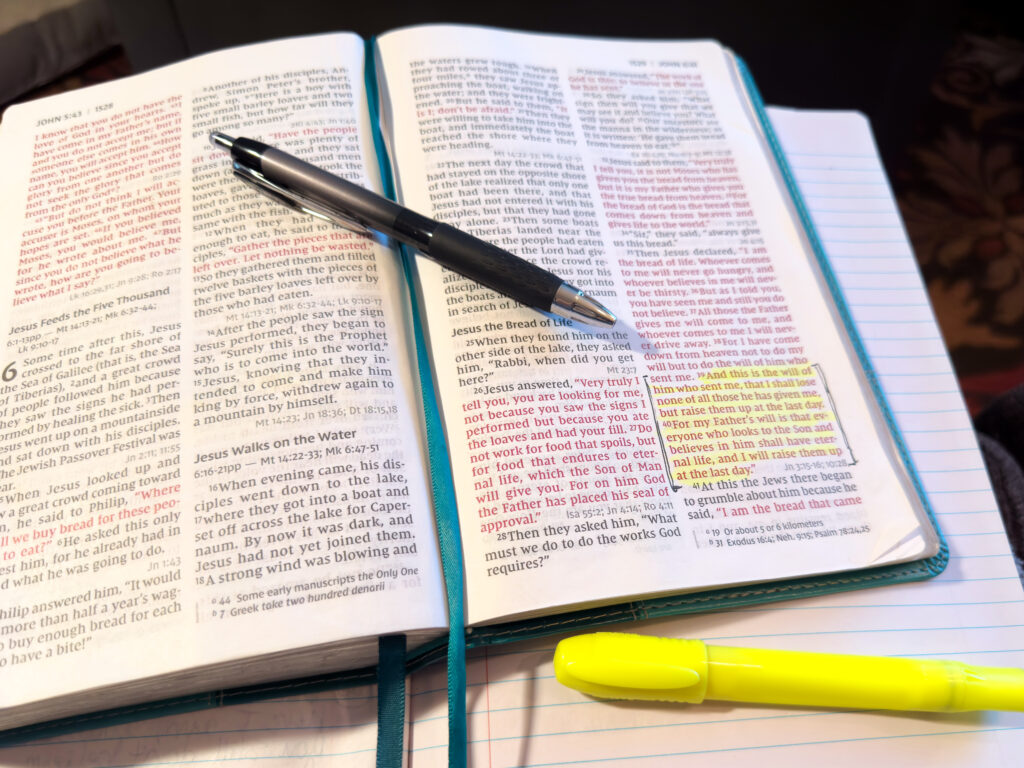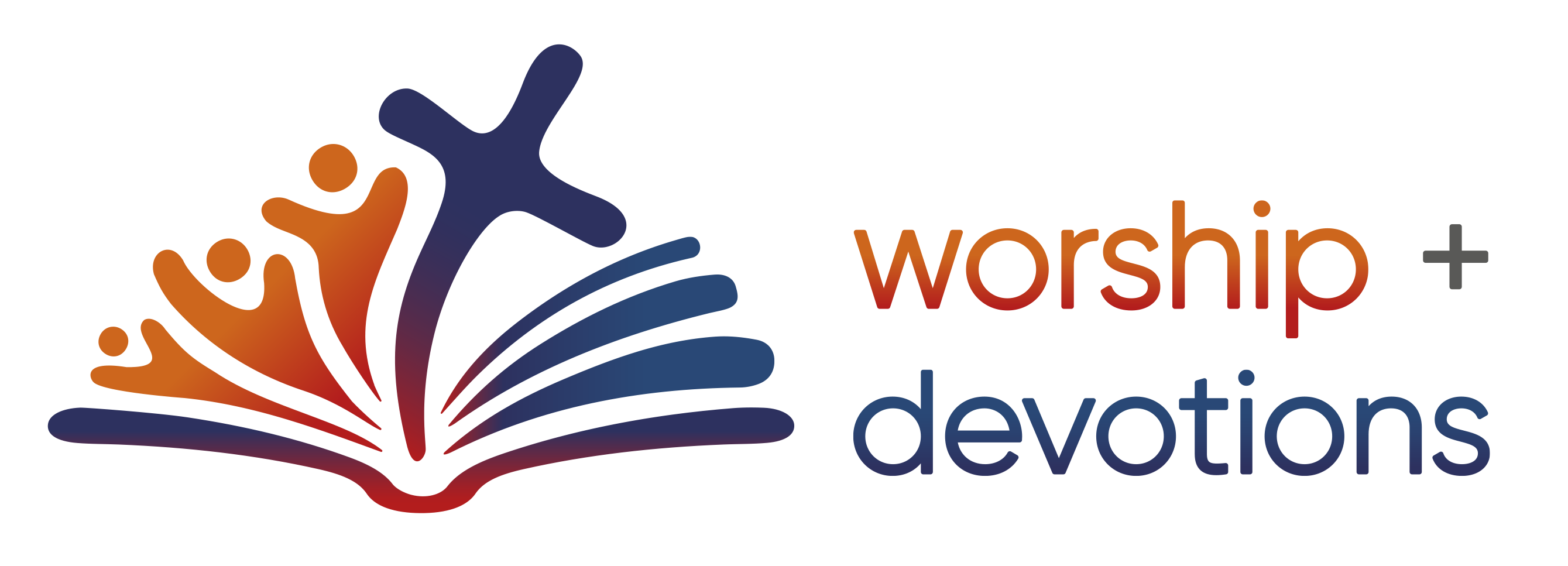Planning Resources
Creating a plan for worship and/or devotions is a great way to ensure that students are exposed to a good range of texts and themes, and that these are presented in a coherent way to help reinforce the central messages of the faith.

Providing some structure and guidance ensures everyone has confidence that they are on right track and allows people to work ahead.
A good plan
- spreads the workload so that the work doesn’t fall on just a few people
- makes sure everyone knows their roles and responsibilities
- provides scaffolding for less experienced staff, and
- enables staff and student involvement.
Planning can occur at various levels. Different planning styles will suit different learning communities. You may like to use a combination of these planning tools. Feel free to choose what works best for your context.

Multi-Year Planning
A learning community might work on the ‘big picture’ approach, planning across multiple years to ensure good coverage of Bible stories. These plans can be quite simple in the level of detail.
Planning across a two- or three-year cycle helps build an overview of worship or devotions, allowing planners to ensure good coverage of the core messages of the Christian faith. In a learning community, a three-year cycle means that students will encounter a story or passage only once as they move through each age band.
This level of planning best suits a whole-of-school approach and would usually involve a team of worship leaders including the school pastor, chaplain or worship leader. It need not be very detailed, particularly if year or term planners are also used.
There are several approaches to this level of planning.
A lectionary is a list of Bible readings for each day or week for a period of time. The Revised Common Lectionary (RCL) is used by many denominations including the Lutheran Church of Australia. It is a three-year cycle of readings. The years are designated A, B, or C. Each yearly cycle begins on the first Sunday of Advent.
Pro’s
- Someone else has already done all the thinking about what the key readings are.
- There are many great resources available for children and youth ministry based on the RCL, which are easily adapted for use in a learning community.
- Many denominations around the world use the RCL so you are likely to find online resources based on this pattern.
- The three-year cycle means that students will encounter a story or passage only once as they move through each age band. Each time they encounter the story, they can build on their previous understanding and dig more deeply.
- Students who attend congregational worship will see the connection between church and school worship.
Cons
- The RCL runs all year long, which means that some core stories and Bible texts fall during the school holidays. Adaptation will be needed to make it work in the learning community.
- Some weeks include passages which are difficult for younger students to understand or relate to. GROW Ministries allow for this in their resources by finding more relatable stories which still connect to the overall theme for the week.
- May limit the ability to develop themes.
- Some staff may find this approach a bit limiting, preferring to have more freedom to select stories/foci which best suits their student cohort at the time.
RCL Resources
 GROW Ministries (the Lutheran Church of Australia’s Child, Youth and Family Ministry) bases most of their resources on the RCL. Some key resources include Growing Faith at Home and GROW Kids, which are attractive, printable resources which can easily be adapted for classroom use.
GROW Ministries (the Lutheran Church of Australia’s Child, Youth and Family Ministry) bases most of their resources on the RCL. Some key resources include Growing Faith at Home and GROW Kids, which are attractive, printable resources which can easily be adapted for classroom use.
Other Lectionary-Based Resources
LCA Worship Planning Page – this website provides weekly service preparation materials. Most useful to learning communities is the Planning Ahead section which includes the lectionary calendars for the next several years, including dates and readings.
Some schools may choose to develop their own lectionaries or adapt the RCL to the school year. The aim of these is to ensure good coverage of the key Bible stories. Using a two- or three-year cycle keeps worship and devotions fresh. Often these self-made lectionaries allow for some themes to run through them, perhaps gathering Bible stories which match the school values and ensuring that each gets some coverage across a year.
Example of DIY Lectionaries
Worship/devotions planners may prefer to develop a multi-year plan around the development of a series of themes or values. This could include a more chronological approach to teaching the Bible, a focus on school or LEA values, or reflect the needs of the particular school community.
Pro’s
- Allows for creativity and a fresh take on presenting the gospel
- Builds student understanding of the interconnectedness of Bible stories and the ‘big picture’ of scripture.
- May help students to make connections to core values in a more organised fashion.
Con’s
- Themes chosen may not resonate three years into the plan
- Care needs to be taken to teach a broad range of Biblical stories/passages and to avoid repetition of particular stories which might fit into more than one theme.
- Requires more time and effort than adopting a standard lectionary.
Example of Multi-Year Thematic Planning
Multi-Year Planning Templates
Yearly Planning
An annual plan for worship and/or devotions may be helpful. This level of planning should involve key staff in the school, such as the worship staff (school pastor/chaplain/coordinator), school leaders, and perhaps representatives of teaching staff and student leaders.
A yearly plan can be very helpful, allowing worship leaders and teaching staff to see the flow of worship or devotions across the whole year. This level of planning is good for taking the rhythm of school life into account and allows for planning ahead.
More detailed than the multi-year plan, a yearly planner could factor in
- the school calendar, including which weeks will be affected by camps, public holidays, sports day etc. The start of the year, graduation and end of the year can also be factored in.
- the seasons of the church year, especially the major celebrations – Ash Wednesday/Lent, Easter, Pentecost, Reformation Day, Advent and Christmas. (link to Seasonal Resources)
- Special occasions such as ANZAC Day, NAIDOC Week etc. (link to Special Occasions Resources)
- Any themes or key areas of focus for the year
- which classes or groups are responsible for which weeks of worship. Sharing the whole year plan for this might make it less stressful for staff if they can factor worship preparation into their workloads.
- When supporting congregational pastors/leaders will participate in worship/visit classes, and when classes might visit supporting congregations.
Yearly Planning Examples
Template for Yearly Planning
Term Planning
Term planning works at a more detailed level, often with more specific resources and organisational details included. Work on a term-by-term basis can allow for greater flexibility as it leaves planners free to adjust and change as needed from term-to-term.
Schools may choose to develop a template which can be updated each term. Individual teachers or groups of teachers may choose to plan their classroom devotions or year-level/cohort-level worship using these planners.
Term planners can be helpful for:
- centrally-organised devotions – in some schools, the school pastor or chaplain may develop devotional resources for use across the school as an aid to teaching staff
- communicating a clear theme across the school for worship/devotions.
- allocating roles and responsibilities in a more detailed fashion
- providing scaffolding for staff to help them unpack the themes/readings for the week
- booking spaces for worship, organising technical and music staff.
Examples of Term Planners
Templates for Term Planning
Planning Devotions
Please refer to the Age Band Guides to Devotions for advice on planning devotions on a weekly or daily basis.
Here are some editable templates for those wishing to write their own devotions.
Resources from LEA Learning Communities
Planning Worship Services
Please refer to the Age Band Guides to Worship for advice on planning individual worship services.
Here are some editable templates for those preparing worship.
Communicating the plan

Once a plan has been developed, it needs to be clearly communicated to everyone involved.
It is a good idea to provide staff with a booklet (printed and/or electronically) which includes the learning community’s expectations, staff responsibilities, and where they can find resources. This could include a link to this website as well as other resources on the school server, in the library etc.
You may like to include other resources which staff will find helpful, such as:
- prayers and Bible verses for all occasions to help staff adapt to situations which might come up
- the guides from this site for your age band and a link to the website
- service orders/patterns for devotions and worship
- don’t forget the practical considerations like locations for worship services, the process for organising for AV support etc
This planning booklet could form part of the induction process for new staff. School pastors/chaplains are encouraged to take staff through the contents at the start of each year. It could also form the basis for a caring conversation if a staff member is feeling overwhelmed. It would be a good idea to follow up with staff periodically or before it is their turn to organise worship to see if they have any questions or concerns.
Staff Booklet Examples
Resources to add to booklets
